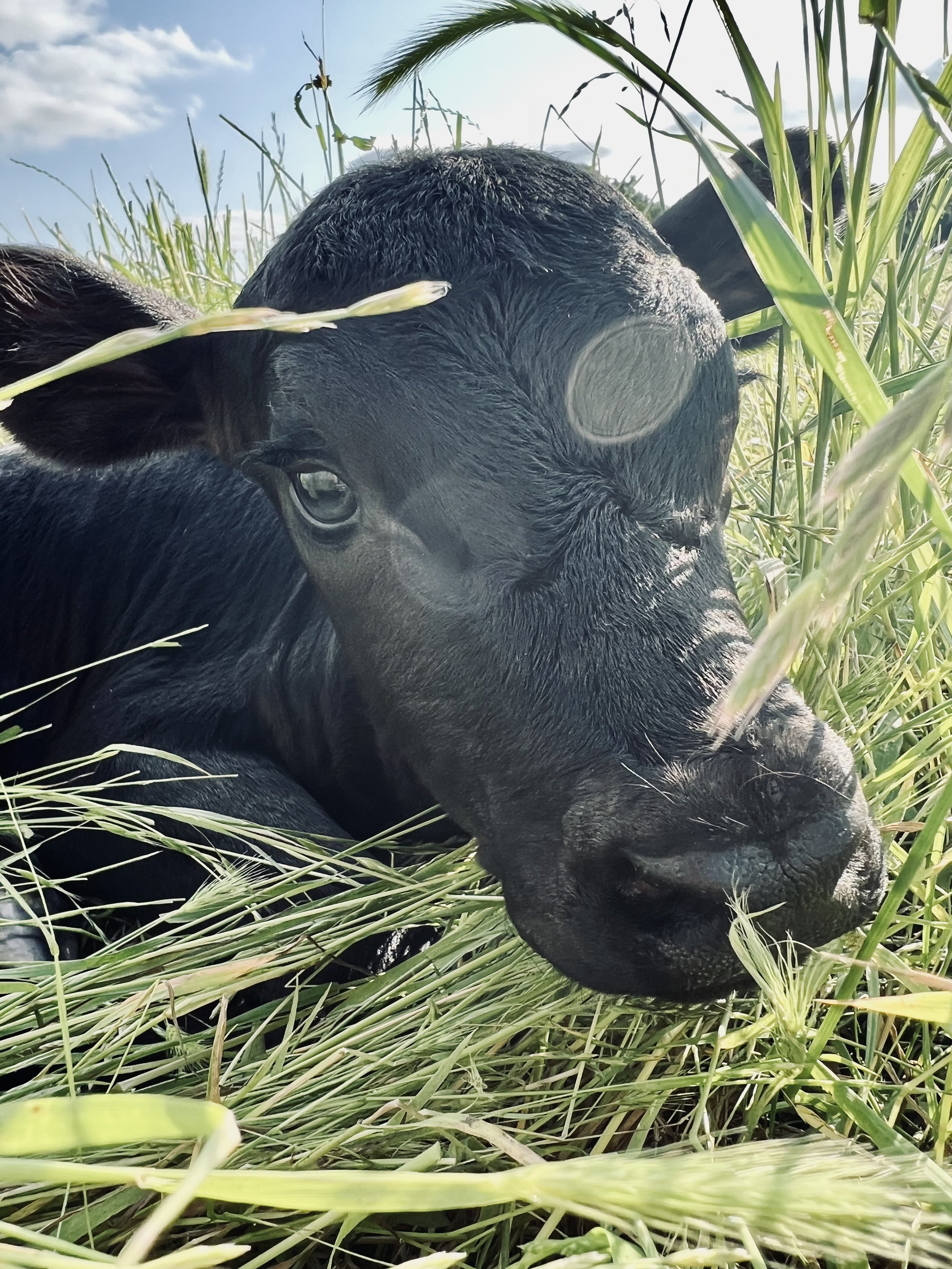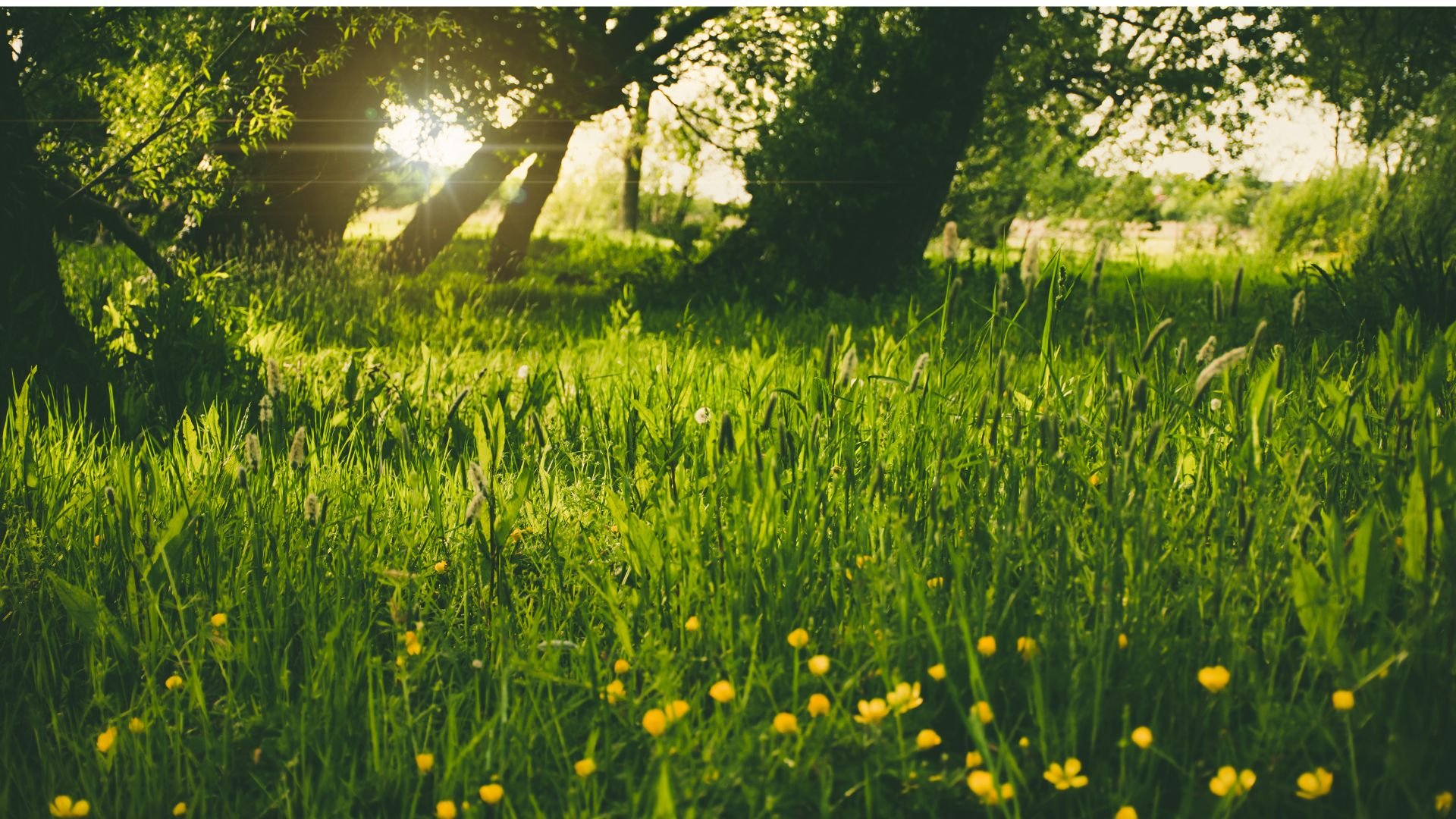Working with Nature to grow Healthy Livestock Feed
In December 2020, Vrooman Ranch embarked on its journey, initially housing seventeen cows on its vast 122-acre property. This humble beginning has since evolved, now we process multiple cows per month, 200-400 chickens per month,and multiple sheep and goats within a span of three years. Quickly, we realized that even with the ample 122 acres, we needed a lot more grass.
Jeremy Vrooman views himself primarily as a grass farmer. His main task is nurturing grass for animal feeding. He has designed several strategies to optimize the benefits obtained from natural feed. His key objectives include accurately forecasting rainfall, regularly repositioning herds, replicating nature's sequence of grazing in a pasture and land management leases.
The amount of rain in Ladonia, TX dictates the acreage required to sustain one cow, typically around 3-5 acres. Every ten inches of rain allows a pasture to be grazed once. With an annual rainfall averaging 45 inches, grass can ideally be grazed 4.5 times per year. The bulk of the rain falls in spring, promoting the growth of grass and the weight gain of animals. Grass growth slows after spring, continuing till October. The challenge after October lies in managing the grass to last through winter until March. January and February present the toughest challenge for grass-fed ranchers. To ensure each pasture is grazed 4.5 times, livestock must be strategically moved daily. If these calculations are off, hay and alfalfa can supplement the animals' diet until March.
By frequently moving the cows throughout the day from one pasture to the next, up to four times or more, we can effectively manage one cow per acre on our ranch. If the cows are not moved, it would take 3-5 acres per cow. This frequent movement prevents the cows from consuming the grass to the ground level, typically leaving it about three inches high. This leftover grass acts as a solar panel, allowing for faster regrowth than shorter grass. This method not only ensures sustainable pasture management but also increases our ranch's capacity, enabling us to raise double the amount of cows on the same area.
The process of transforming a field into the greenest, healthiest grass begins with cows grazing the grass initially. This is followed by sheep and goats, which effectively consume the weeds and low-hanging leaves. The cycle concludes with meat chickens picking at the remaining vegetation while simultaneously fertilizing the soil. This systematic approach aids in rejuvenating the land, creating a lush, verdant pasture that any rancher would be proud of.
Over time, we've established relationships with local landowners who require assistance in managing livestock. They've sought our expertise to utilize our livestock in maintaining their property's vegetation. If the location is convenient for us, we gladly take the chance to offer our livestock more nutritious feed. Presently, we have grazing leases in place in Ladonia, Caddo Mills, along with three more potential sites under consideration. The frequency of livestock relocation varies across these lands. Typically, we allocate large paddocks where the animals can graze anywhere from three days to a week, after which they're transitioned to a fresh patch of grass. Once the herd has consumed all available vegetation, we transport them to another grazing site.
Vrooman Ranch provides a beneficial solution for all parties involved - the livestock, our customers and landowners. For those who possess unused land and wish to prevent overgrowth, our services are readily available to assist you in managing it. Furthermore, if you're seeking a land manager, we can accommodate this need as well.





